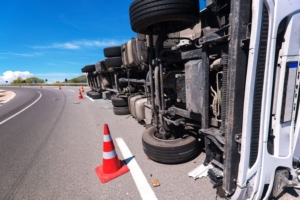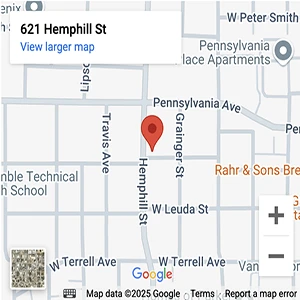Why Do Trucks Require Considerably More Stopping Distance Than Cars?
Because of their sheer size, trucks are much harder to maneuver in traffic than passenger vehicles. If commercial drivers are transporting a full cargo load, they must also take into account their tractor-trailer’s weight when making judgment calls in traffic.

To ensure optimum maneuverability—and the safety of everyone on the road—the U.S. Department of Transportation established size limits for commercial vehicles in 1956. Today, the maximum width for tractor-trailers that travel on the National Network of highways is 102 inches, or 2.6 meters.
In regard to weight limits, no vehicle on the Interstate Highway System can weigh more than 80,000 pounds. States may impose their own weight limits on roads and bridges that are not part of the national system.
Unfortunately, even with these safety regulations, truckers can still make judgment errors when behind the wheel. For example, they might take a turn too sharply, resulting in a rollover crash, or they might fail to leave enough stopping distance and ultimately cause a rear-end collision.
If you were hurt in a truck accident with a reckless or negligent commercial driver, turn to the Cooper Law Firm. Attorney N. Eric Cooper is a member of the Texas Trial Lawyers Association and the Gregg County Bar Association.
Visit our website at www.cooper-law-firm.com to learn about the quality legal guidance our firm is proud to provide. You can schedule a free consultation with a truck accident attorney in Mount Pleasant by calling 903-297-0037.
Why Do Trucks Require Considerably More Stopping Distance Than Cars?
There are several reasons why commercial vehicles require significantly more stopping distance than cars, and the primary one is weight. If a car weighing 4,000 pounds and a tractor-trailer weighing 80,000 pounds are both traveling under ideal conditions at 65 mph, the car will take 316 feet to come to a complete stop while the truck will require 525 feet.
The weight of a vehicle has a direct impact on its braking distance, or the distance it travels from the time the motorist begins pressing the brake to the time the vehicle stops. The other two main factors that affect total stopping distance are perception distance and reaction time.
Perception distance is the distance a vehicle travels from the time the motorist identifies the hazard ahead to the time he or she determines which course of action to take. Reaction time is the amount of time it takes to driver to execute the maneuver that he or she has determined will be the best course of action.
Speed also has a direct impact on a vehicle’s stopping distance, and the faster you are traveling, the more distance you will need to come to a complete stop. For example, if the car and truck mentioned above are traveling under the same conditions at 40 mph instead of 65 mph, the car will require 124 feet to come to a stop, and the tractor-trailer will require 169 feet.
Sadly, commercial drivers do not always take into account the additional stopping distance their vehicle requires. If you were injured in a crash with a negligent trucker, you may be entitled to compensation for medical bills, lost income, and pain and suffering.
To determine if you have grounds for a claim, turn to the Cooper Law Firm. Contact us online, or call 903-297-0037 to schedule a free case evaluation with a truck accident lawyer in Mount Pleasant. You can learn more about tractor-trailer claims in Texas by visiting the USAttorneys website.

















